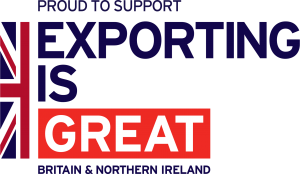When entering new markets, as many businesses now will be in 2021 after the UK-EU transition period ended, you may think about the logistics and processes, but not about adapting your marketing material. If you are marketing your products or services across cultures, you need to switch your cultural lens. Here are 10 tips, courtesy of Local to Global, to get started:
Use humans to translate
Machine translation is useful when using it informally and not in a business context. However, when you want your brand to have a good reputation internationally and really engage with a foreign audience, there is no room for the apocalyptic mistakes we often see from automated translation tools such as Google Translate. In terms of search engine ranking, you may be surprised to know that Google doesn’t rank machine translated content!
Beware of language variants
Many of the most widely spoken languages have several language variants. A few examples are British and American English, European and Latin American Spanish, European and Brazilian Portuguese. When marketing to a particular country, it is important to take their language variant into account. Most American English words and expressions are understood in British English, but some European Spanish words can be offensive in Latin American Spanish.
Be aware of your cultural bubble
We often don’t realise our cultural perspective until we meet someone with a different perspective. Ways of doing business vary across cultures and we need to create a brand that is adaptive. By considering your own communication style, business structure, leadership and etiquette, you can become aware of your cultural bubble.
Learn how to build trust across cultures
In ‘The Culture Map’ (2015), Erin Meyer highlights that building trust varies across cultures. The trusting scale ranges from being task-based to relationship-based. When creating your marketing material, it is important to consider how your audience builds trust. Is your audience more likely to build trust with you by reading a case study or by having several meetings with you?
Choose colours carefully
Colour psychology is crucial when building a brand. The colour palette used by a brand can evoke different feelings or make different impressions on an audience. It is important to consider the perspective upon which the colours are viewed. History and traditions can have an impact on the meaning of specific colours, so colours may imply different messages in a different culture.
Identify your brand touchpoints
In the Google study, ‘Zero Moments of Truth’, it was found that a prospect experiences an average of 11 brand touchpoints and seven hours of engagement with your brand touchpoints in four different locations. The brand touchpoints may differ according to the different markets that you are operating in. In addition, the search engines and social media platforms that you use may not be effective in a different market due to trends or restrictions.
Think of your website as your global shop window
Research shows that over 70% of internet users will not buy online if the information is not in their native language, which is why translating and localising your website is paramount. What does localising a website mean? It means, not only translating the words, but addressing cultural differences: currencies, measurements, date format, symbols, colours, navigation, coding, SEO (Search Engine Optimisation), and the list goes on! After all, your website is your global shop window, and you want all visitors to have a good experience.
Let design and translation work together
Design and translation are both powerful communicators and should not be seen as separate elements of the marketing process. It is important that the designer and translator both work from the same genius marketing idea that captures the attention of your audience. At its worst, your marketing efforts will go unnoticed. At its best, the design and translation will work in harmony with each other and your marketing will create the engagement it deserves.
Have brand guidelines
Brand guidelines can be very effective when marketing across cultures, especially if you are using overseas intermediaries to sell your products or services. A simple list of “must” and “mustn’t” do statements regarding how to communicate, adapt the branding and use specific marketing channels and tools is a good start to keep your branding consistent. You can either have a brand guidelines document for each specific country or one document with guidelines that have taken all relevant cultures into account (this will require a bit more work!).
Don’t forget your end goal
As with any other strategy, knowing your end goal will help you identify and take the necessary steps to achieve it. What do you want to achieve by marketing to other cultures? This question will trigger others such as
- “Who is your target audience?”
- “How do they do business?”
- “Which social media platforms do they use?”
- “What is important to them?”
When reviewing your marketing activities and measuring results, keep that end goal in mind too.
This article was written by Eva Túnez Salvador and Janina Neumann, founders of Local to Global, a one-stop gateway for all cultural, linguistic, and branding requirements when exporting products or services to other countries.


